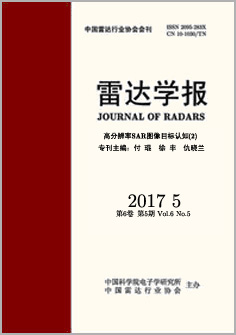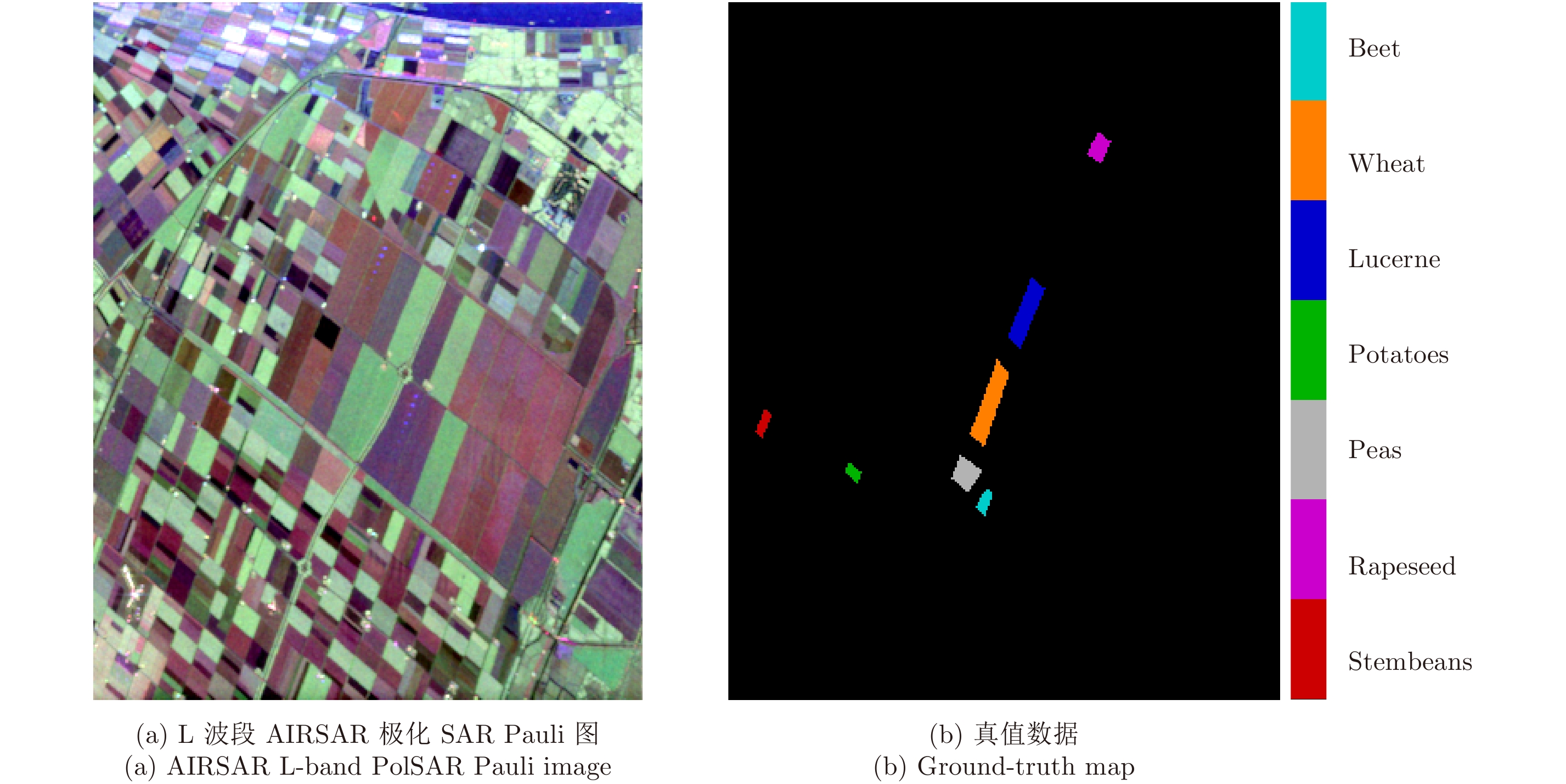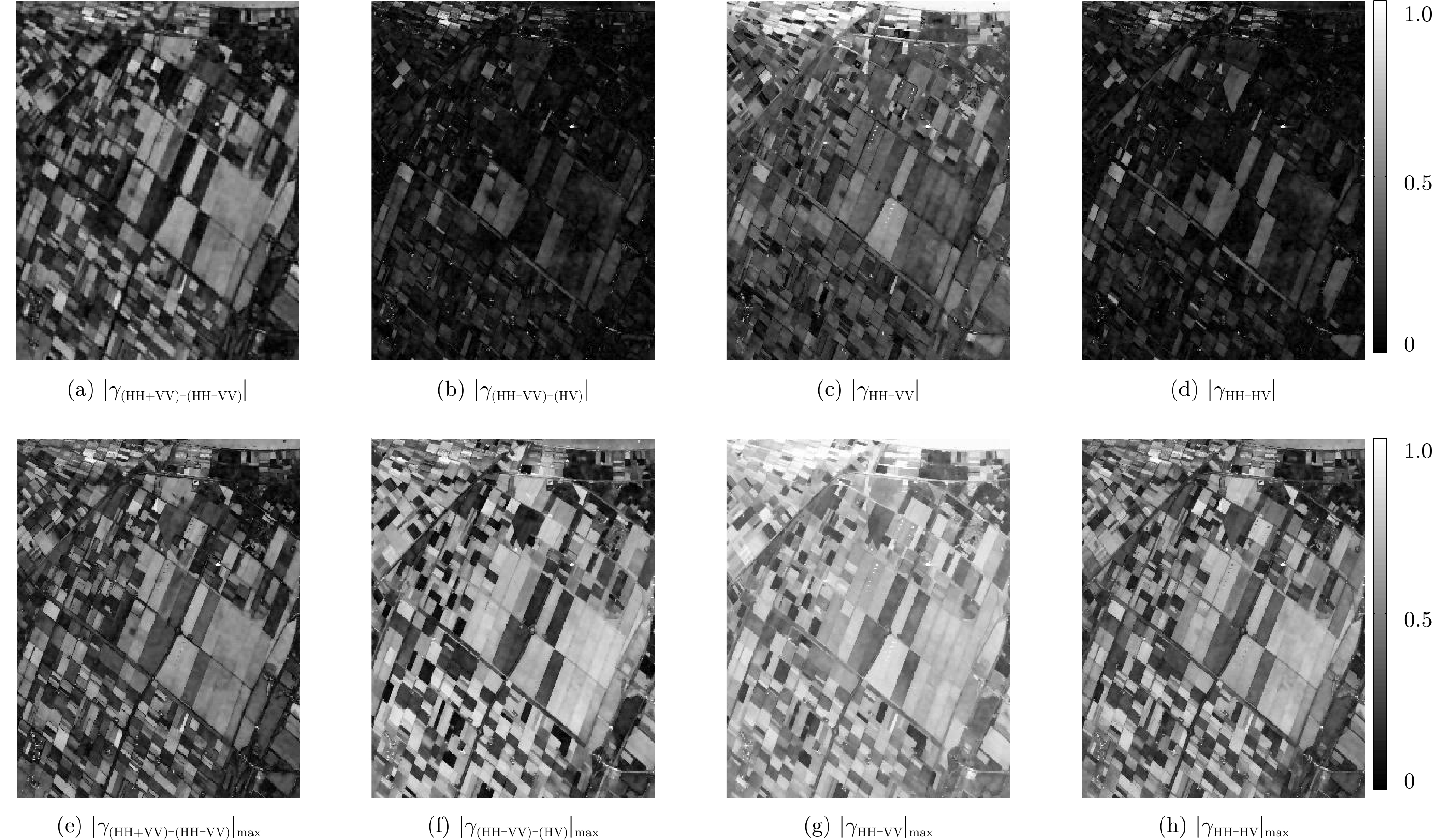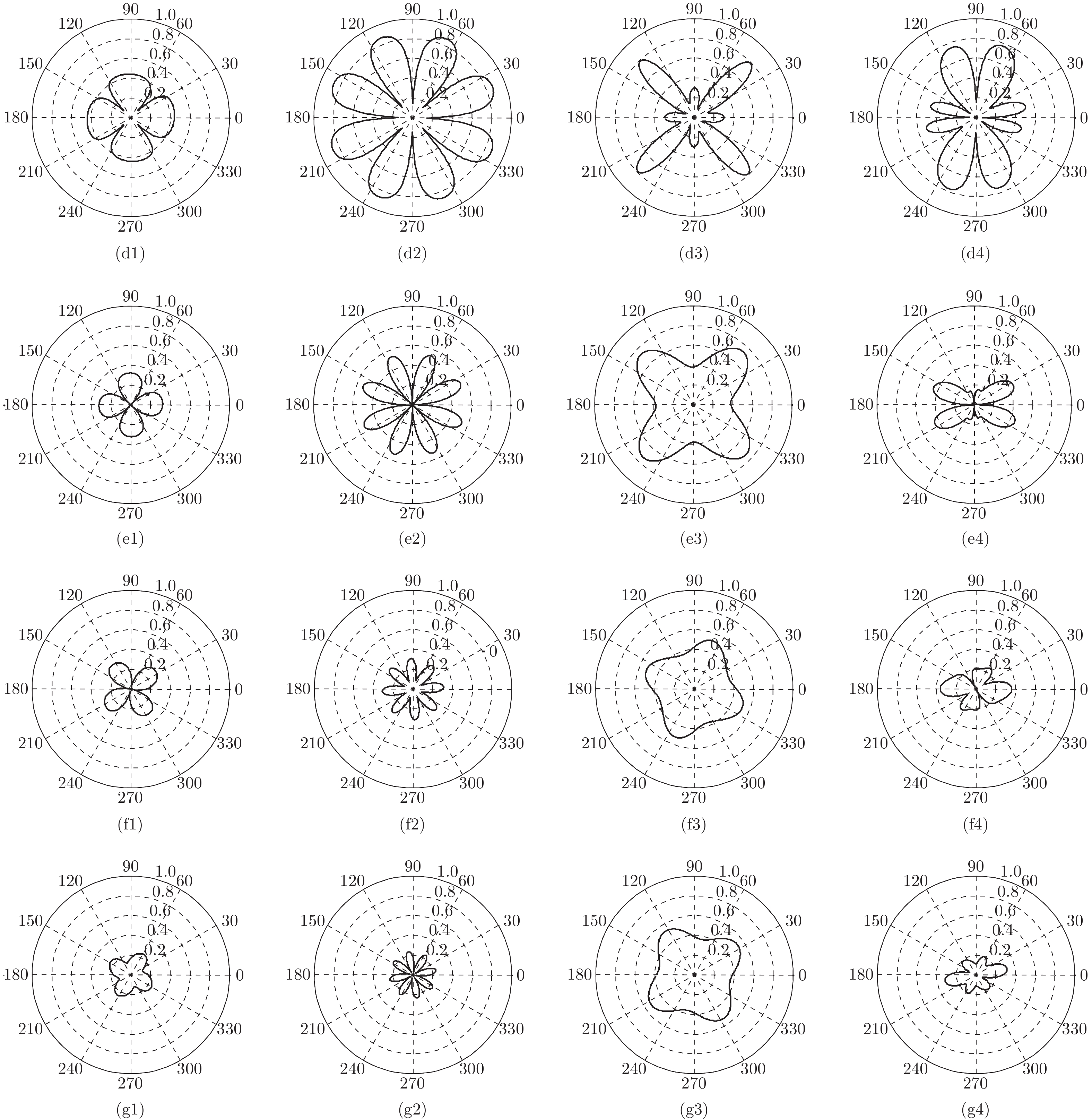| [1] |
Lee J S and Pottier E. Polarimetric Radar Imaging: From Basics to Applications[M]. Boca Raton: CRC Press, 2009.
|
| [2] |
Cloude S R. Polarisation Application in Remote Sensing[M]. Oxford: Oxford University Press, 2009.
|
| [3] |
金亚秋, 徐丰. 极化散射与SAR遥感信息理论与方法[M]. 北京: 科学出版社, 2008.
Jin Ya-qiu and Xu Feng. Theory and Approach for Polarimetric Scattering and Information Retrieval of SAR Remote Sensing[M]. Beijing: Science Press, 2008.
|
| [4] |
张红, 王超, 刘萌, 等. 极化SAR理论、方法与应用[M]. 北京: 科学出版社, 2015.
Zhang Hong, Wang Chao, Liu Meng, et al.. Theory, Approach and Application of Polarimetric SAR[M]. Beijing: Science Press, 2015.
|
| [5] |
Dell’Acqua F and Gamba P. Remote sensing and earthquake damage assessment: Experiences, limits, and perspectives[J]. Proceedings of the IEEE, 2012, 100(10): 2876–2890. doi: 10.1109/JPROC.2012.2196404 |
| [6] |
Sato M, Chen S W, and Satake M. Polarimetric SAR analysis of Tsunami damage following the March 11, 2011 East Japan Earthquake[J]. Proceedings of the IEEE, 2012, 100(10): 2861–2875. doi: 10.1109/JPROC.2012.2200649 |
| [7] |
Chen S W and Sato M. Tsunami damage investigation of built-up areas using multitemporal spaceborne full polarimetric SAR images[J]. IEEE Transactions on Geoscience and Remote Sensing, 2013, 51(4): 1985–1997. doi: 10.1109/TGRS.2012.2210050 |
| [8] |
Chen S W, Wang X S, and Sato M. Urban damage level mapping based on scattering mechanism investigation using fully polarimetric SAR data for the 3.11 East Japan earthquake[J]. IEEE Transactions on Geoscience and Remote Sensing, 2016, 54(12): 6919–6929. doi: 10.1109/TGRS.2016.2588325 |
| [9] |
|
| [10] |
|
| [11] |
|
| [12] |
|
| [13] |
|
| [14] |
|
| [15] |
|
| [16] |
|
| [17] |
Huynen J R. Phenomenological Theory of Radar Targets[D]. [Ph.D. dissertation], Delft University of Technology, 1970.
|
| [18] |
Cloude S R and Pottier E. An entropy based classification scheme for land applications of polarimetric SAR[J]. IEEE Transactions on Geoscience and Remote Sensing, 1997, 35(1): 68–78. doi: 10.1109/36.551935 |
| [19] |
Touzi R. Target scattering decomposition in terms of roll-invariant target parameters[J]. IEEE Transactions on Geoscience and Remote Sensing, 2007, 45(1): 73–84. doi: 10.1109/TGRS.2006.886176 |
| [20] |
Paladini R, Martorella M, and Berizzi F. Classification of man-made targets via invariant coherency-matrix eigenvector decomposition of polarimetric SAR/ISAR images[J]. IEEE Transactions on Geoscience and Remote Sensing, 2011, 49(8): 3022–3034. doi: 10.1109/TGRS.2011.2116121 |
| [21] |
Chen S W, Li Y Z, Wang X S, et al.. Modeling and interpretation of scattering mechanisms in polarimetric synthetic aperture radar: Advances and perspectives[J]. IEEE Signal Processing Magazine, 2014, 31(7): 79–89.
|
| [22] |
Xu F and Jin Y Q. Deorientation theory of polarimetric scattering targets and application to terrain surface classification[J]. IEEE Transactions on Geoscience and Remote Sensing, 2005, 43(10): 2351–2364. doi: 10.1109/TGRS.2005.855064 |
| [23] |
An W T, Cui Y, and Yang J. Three-component model-based decomposition for polarimetric SAR data[J]. IEEE Transactions on Geoscience and Remote Sensing, 2010, 48(6): 2732–2739. doi: 10.1109/TGRS.2010.2041242 |
| [24] |
Yamaguchi Y, Sato A, Boerner W M, et al.. Four-component scattering power decomposition with rotation of coherency matrix[J]. IEEE Transactions on Geoscience and Remote Sensing, 2011, 49(6): 2251–2258. doi: 10.1109/TGRS.2010.2099124 |
| [25] |
Van Zyl J J, Arii M, and Kim Y. Model-based decomposition of polarimetric SAR covariance matrices constrained for nonnegative eigenvalues[J]. IEEE Transactions on Geoscience and Remote Sensing, 2011, 49(9): 3452–3459. doi: 10.1109/TGRS.2011.2128325 |
| [26] |
Arii M, Van Zyl J J, and Kim Y. Adaptive model-based decomposition of polarimetric SAR covariance matrices[J]. IEEE Transactions on Geoscience and Remote Sensing, 2011, 49(3): 1104–1113. doi: 10.1109/TGRS.2010.2076285 |
| [27] |
Neumann M, Ferro-Famil L, and Reigber A. Estimation of forest structure, ground, and canopy layer characteristics from multibaseline polarimetric interferometric SAR data[J]. IEEE Transactions on Geoscience and Remote Sensing, 2010, 48(3): 1086–1104. doi: 10.1109/TGRS.2009.2031101 |
| [28] |
Chen S W, Wang X S, Xiao S P, et al.. General polarimetric model-based decomposition for coherency matrix[J]. IEEE Transactions on Geoscience and Remote Sensing, 2014, 52(3): 1843–1855. doi: 10.1109/TGRS.2013.2255615 |
| [29] |
Ballester-Berman J D and Lopez-Sanchez J M. Applying the Freeman-Durden decomposition concept to polarimetric SAR interferometry[J]. IEEE Transactions on Geoscience and Remote Sensing, 2010, 48(1): 466–479. doi: 10.1109/TGRS.2009.2024304 |
| [30] |
Chen S W, Wang X S, Li Y Z, et al.. Adaptive model-based polarimetric decomposition using PolInSAR coherence[J]. IEEE Transactions on Geoscience and Remote Sensing, 2014, 52(3): 1705–1718. doi: 10.1109/TGRS.2013.2253780 |
| [31] |
Wang C L, Yu W D, Wang R, et al.. Comparison of nonnegative eigenvalue decompositions with and without reflection symmetry assumptions[J]. IEEE Transactions on Geoscience and Remote Sensing, 2014, 52(4): 2278–2287. doi: 10.1109/TGRS.2013.2259177 |
| [32] |
Li H Z, Wang C, Zhang H, et al.. A unified three-component scattering model for polarimetric coherent target decomposition[J]. International Journal of Remote Sensing, 2012, 33(9): 2868–2891. doi: 10.1080/01431161.2011.622728 |
| [33] |
Zhu F Y, Zhang Y H, and Li D. An extension of a complete model-based decomposition of polarimetric SAR data[J]. IEEE Geoscience and Remote Sensing Letters, 2016, 13(2): 287–291. doi: 10.1109/LGRS.2015.2511076 |
| [34] |
Deng L and Yan Y N. Improving the Yamaguchi4 decomposition method using selective polarization orientation compensation[J]. Canadian Journal of Remote Sensing, 2016, 42(2): 125–135. doi: 10.1080/07038992.2016.1160774 |
| [35] |
Zou B, Zhang Y, Cao N, et al.. A four-component decomposition model for PolSAR data using asymmetric scattering component[J]. IEEE Journal of Selected Topics in Applied Earth Observations and Remote Sensing, 2015, 8(3): 1051–1061. doi: 10.1109/JSTARS.2014.2380151 |
| [36] |
Wang Y H, Liu H W, and Jiu B. PolSAR coherency matrix decomposition based on constrained sparse representation[J]. IEEE Transactions on Geoscience and Remote Sensing, 2014, 52(9): 5906–5922. doi: 10.1109/TGRS.2013.2293663 |
| [37] |
Cloude S R and Pottier E. A review of target decomposition theorems in radar polarimetry[J]. IEEE Transactions on Geoscience and Remote Sensing, 1996, 34(3): 498–518.
|
| [38] |
|
| [39] |
Chen S W, Ohki M, Shimada M, et al.. Deorientation effect investigation for model-based decomposition over oriented built-up areas[J]. IEEE Geoscience and Remote Sensing Letters, 2013, 10(3): 273–277.
|
| [40] |
Chen S W, Wang X S, and Sato M. Uniform polarimetric matrix rotation theory and its applications[J]. IEEE Transactions on Geoscience and Remote Sensing, 2014, 52(8): 4756–4770. doi: 10.1109/TGRS.2013.2284359 |
| [41] |
Chen S W, Li Y Z, and Wang X S. A visualization tool for polarimetric SAR data investigation[C]. The 11th European Conference on Synthetic Aperture Radar, Hamburg, Germany, 2016: 579–582.
|
| [42] |
Chen S W and Wang X S. Polarimetric coherence pattern: A visualization tool for PolSAR data investigation[C]. The IEEE International Geoscience and Remote Sensing Symposium (IGARSS), Beijing, China, 2016: 7509–7512.
|
| [43] |
Xiao S P, Chen S W, Chang Y L, et al.. Polarimetric coherence optimization and its application for manmade target extraction in PolSAR data[J]. IEICE Transactions on Electronics, 2014, 97(6): 566–574.
|
| [44] |
Chen S W, Li Y Z, and Wang X S. Crop discrimination based on polarimetric correlation coefficients optimization for PolSAR data[J]. International Journal of Remote Sensing, 2015, 36(16): 4233–4249. doi: 10.1080/01431161.2015.1079345 |
| [45] |
Lee J S, Schuler D L, Ainsworth T L, et al.. On the estimation of radar polarization orientation shifts induced by terrain slopes[J]. IEEE Transactions on Geoscience and Remote Sensing, 2002, 40(1): 30–41. doi: 10.1109/36.981347 |
| [46] |
Chen S W, Wang X S, and Sato M. PolInSAR complex coherence estimation based on covariance matrix similarity test[J]. IEEE Transactions on Geoscience and Remote Sensing, 2012, 50(11): 4699–4710. doi: 10.1109/TGRS.2012.2192937 |
| [47] |
Tao Chensong, Chen Siwei, Li Yongzhen, et al. Polarimetric SAR terrain classification using polarimetric feature derived from rotation domain[J]. Journal of Radars. doi: 10.12000/JR16131 |
| [48] |
Ainsworth T L, Schuler D L, and Lee J S. Polarimetric SAR characterization of man-made structures in urban areas using normalized circular-pol correlation coefficients[J]. Remote Sensing of Environment, 2008, 112(6): 2876–2885. doi: 10.1016/j.rse.2008.02.005 |
| [49] |
Yamaguchi Y, Yamamoto Y, Yamada H, et al.. Classification of terrain by implementing the correlation coefficient in the circular polarization basis using X-band POLSAR data[J]. IEICE Transactions on Communications, 2008, E91B(1): 297–301.
|




 Submit Manuscript
Submit Manuscript Peer Review
Peer Review Editor Work
Editor Work





 DownLoad:
DownLoad:












